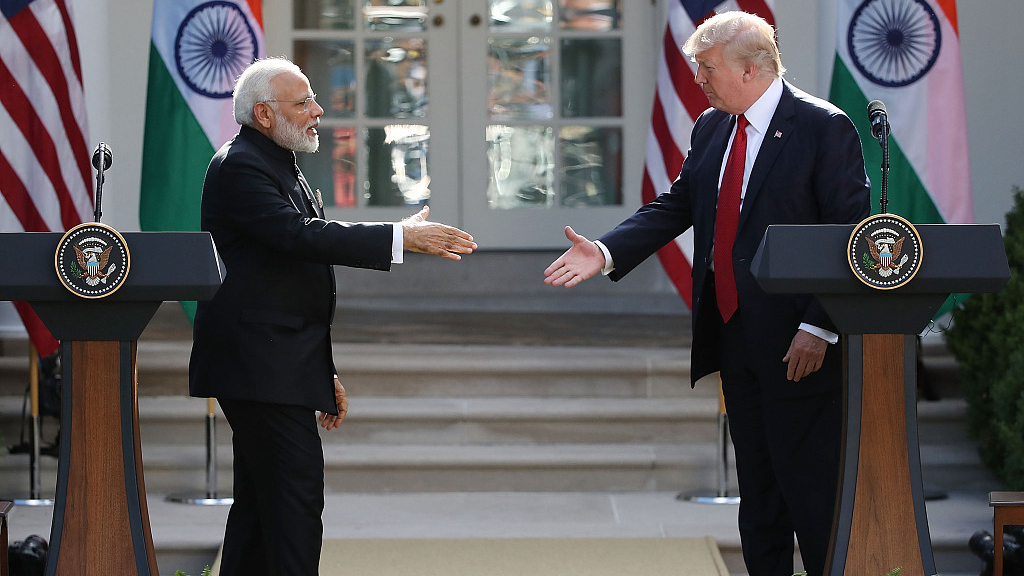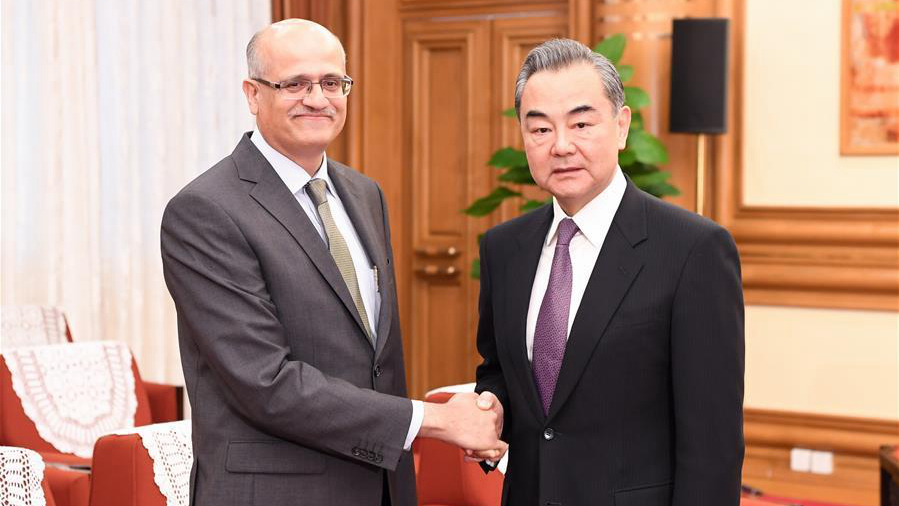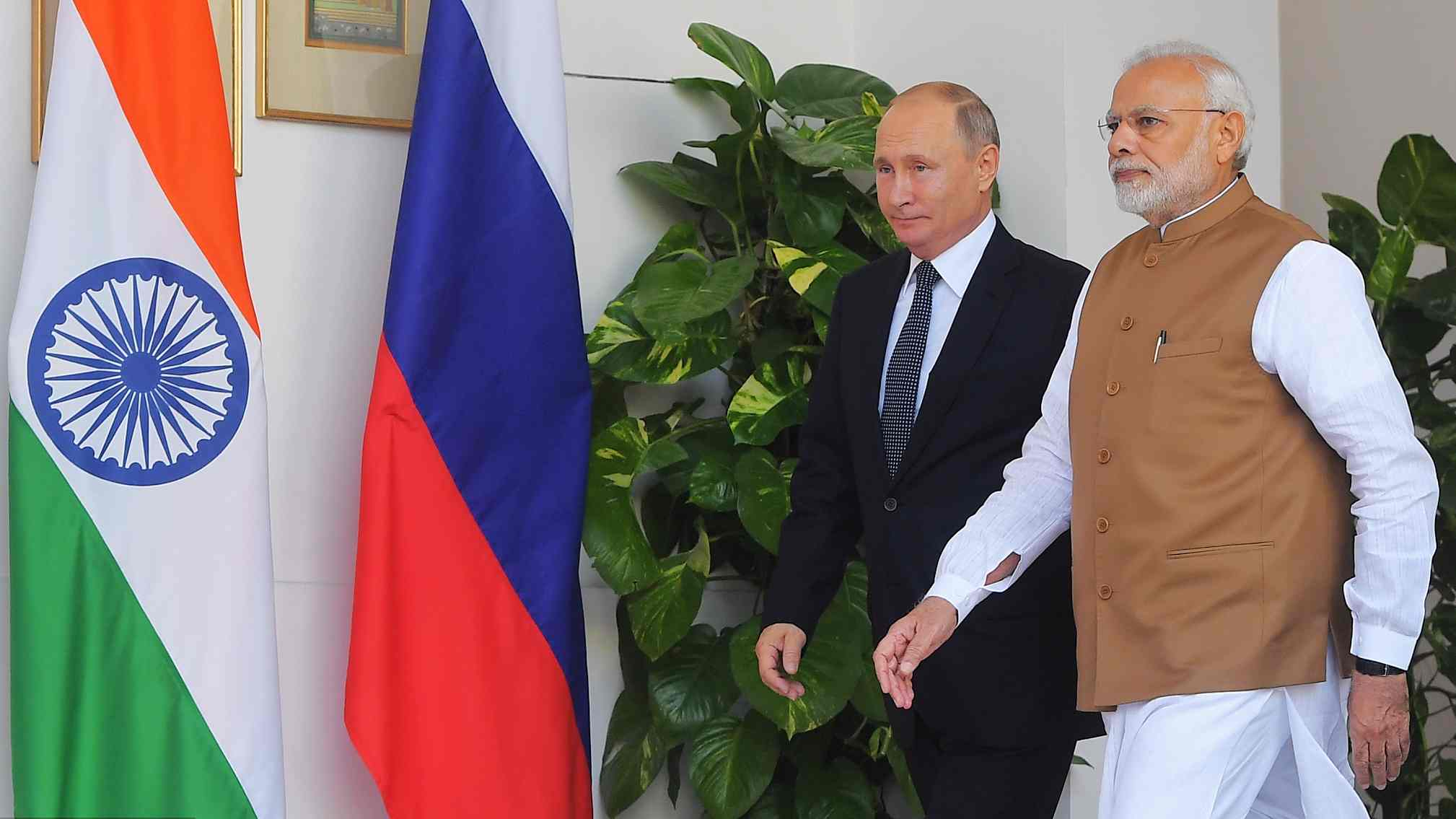

Editor's note: This article is based on an interview with Long Xingchun, director of the Center for Indian Studies, China West Normal University. The article reflects the expert's opinion, and not necessarily the views of CGTN.
"China, India and Russia are sharing more common grounds while the India-U.S. relations are called into question with lingering sticky questions," according to Long Xingchun, director of the Center for Indian Studies, China West Normal University.
The U.S. and India, the "natural partners" as described by the leaders of the two countries, have enjoyed closer bilateral ties since the Cold War. U.S. President Donald Trump even claimed that he was a "big, big fan" of India.
Indeed, in the past two decades, Washington and New Delhi have seen considerable improvement in their bilateral relationship, especially in the aspect of defense cooperation. From Bill Clinton to Donald Trump, the U.S. presidents have highlighted the U.S.-India relationship as one of their diplomatic priority. In 2018, the Trump administration, in a symbolic nod to India's growing military relevance, changed the name of its Pacific Command to the U.S. Indo-Pacific Command.
But of late, the two countries are trapped in mounting frictions ranging from the U.S. decision to withdraw India's Generalized System of Preferences (GSP) benefits – a program to aid the less developing countries – to India's planned acquisition of Russian S-400 anti-aircraft missiles.
Against this backdrop, U.S. Secretary of State Mike Pompeo is paying a visit to India, trying to keep the Washington-New Delhi friendship on track.

Chinese State Councilor and Foreign Minister Wang Yi (R) meets with Indian Foreign Secretary Vijay Keshav Gokhale in Beijing, China, April 22, 2019. /Xinhua Photo
Trade frictions are lingering
One of the sticky issues for the U.S. and India is the ongoing trade friction although the two are trying to keep this issue under control.
On June 5, the Trump administration, annoyed by its 24-billion-U.S.-dollar trade deficit with India, cancelled India's trade privileges under the GSP, hitting Indian goods worth six billion U.S. dollars, which previously had duty-free access to the U.S. market. In response, India imposed import tariffs on 28 items from the U.S., amounting up to 1.4 billion U.S. dollars.
In Long's view, although the U.S. had a trade deficit with India, the deficit only occupies a very small part of the U.S. total foreign trade and considering the different economic development status, developing countries including India have enjoyed more favorable trade policies in the international community, which is an agreed norm.
However, holding the banner of "America First", Trump's America is using tariffs against countries, including its allies, which have trade surpluses with the country. From China to India, Washington's tariff war has exerted huge influences on the global economy and challenged the basic foundation of economic globalization.

Russian President Vladimir Putin (L) and Indian Prime Minister Narendra Modi during their meeting in New Delhi, India, October 5, 2018. /VCG Photo
Taking sides or striking a balance
Apart from the U.S., India also has more frequent contacts with China and Russia driven by their geographic intimacy and stance on globalization. While India tries to maintain a complex web of warm foreign relationships, the U.S., in a bid to balance China and Russia, has been involved in the China-India-Russia triangle relationship.
Since the U.S. blacklisting of Huawei in May, the U.S. government has been at pains to pressure countries including India to weave a technology "blockade net" against Huawei. For Russia, it was reported that one of the goals for Pompeo's visit was to persuade India to give up its planned acquisition of Russian S-400 anti-aircraft missiles.
All of these diktats may generate a backlash in India, where people are very sensitive about being ordered about by foreign powers. Considering Huawei's advanced and cost-effective 5G technology and the time-honored India-Russia military cooperation, India will devote to striking a balance among China, the U.S. and Russia, according to Long.
"Besides, with the Trump administration's application of 'America first' policy, unilaterally withdrawal from the Iran nuclear deal and disregard for the Paris climate accord, India has found more common grounds with China and Russia," Long said, "In this context, the China-India-Russia cooperation mechanism will become more and more important."
As India and the U.S. navigate their differences, the future bilateral relationship could well hang in balance while India will cautiously deal with other countries for maximum benefits.
(If you want to contribute and have specific expertise, please contact us at opinion@cgtn.com.)

Copyright © 2018 CGTN. Beijing ICP prepared NO.16065310-3
Copyright © 2018 CGTN. Beijing ICP prepared NO.16065310-3